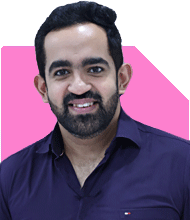
I am a female (26), I was working as an assistant professor and then I met this guy we dated for few months and we knew that everything is compatible he has a stable business and well settled family he is earning quite good and we can spend the rest of our lives together so we moved on to tell our parents, his parents and family came to meet me and they agreed then it was my turn my mom and dad always use to say that if you have someone just tell us we are okay they said we know you are dependent enough so just tell us, I really thought it will be easy one and I told my mom and my sister over the phone and my mom asked me every detail about him and said okay we will think about it, then I told my dad about him and my dad has been super chill with me since childhood so we had a long chat about this he asked me about him just like my mom every detail then he said okay when the deepawali break will be their come home we will talk about this face to facE, I was happy that everything is nice then the vacation happened I went back home first the quarrels started when my mom addressed that they will never expected this from me they said they supported me initially because they thought at this age I will not bring anyone and will convince to arrange one, then day and night fighting started my father did the most bizzare thing he called my college and said I am ill and will not join college he faked a report(my father is a very well known doctor in my area so he has power here in our native place) and submitted their they automatically blocked me from their server I tired telling them but the most bizzare thing happened my father beat me from head to toe and threatend me that I should stop talking to him, then days turn into months and again my partner father stood up for us he called my father to talk about this and my father abused them threatened them and give false allegation on my partner came home and snatched my father later after a month he gave me my phone back as I started being a rebel, then he went to my work place without even informing me and took all my luggage and packed everything from their and came back home with everything and said you are on house arrest untill you agree to arrange marriage and forget that boy. I love him so much he does too but now because of my parents his parents are scared for their son and are denying to agree but we both are financially independent and well educated and we want to live with each other we are thinking to elope I dont know if this is right or wrong, because it has been seven months of me staying locked down in my house and my parents are forcing me verbally and physically abusing me to say yes for arrange marriage.... I dont know what to do and with whom to discuss please kindly help me out.
Ans: It’s clear that you and your partner love each other deeply and are willing to stand by each other despite this turmoil. The fact that his family is now hesitant is understandable, given the hostility from your parents. But the strength you and your partner have shown through this is a sign that your relationship is built on trust and commitment. That kind of connection is rare, and it’s worth fighting for.
Elope? That’s a huge step, and I understand why it’s crossed your mind. You’re desperate for freedom, for the ability to choose your own life, and to finally break free from the suffocating grip of your parents' control. But eloping will come with its own set of consequences—emotional, social, and even legal. Your parents might retaliate even more aggressively. They could try to interfere with your life and your partner's life afterward, possibly dragging this into a public scandal. Your father’s influence in the community might make things harder for you both in the long run.
But here’s the truth—you cannot live the rest of your life under someone else's control. You cannot sacrifice your happiness and autonomy to satisfy their misguided expectations. Love and marriage are not about caste, status, or parental approval—they are about partnership, understanding, and mutual respect. If your partner is ready to stand by you and you both are truly prepared to face the fallout together, then choosing to be with him is not wrong. You’re both adults. You’re financially independent and emotionally mature enough to know what you want from life.
What you need to consider is whether you have the emotional strength to handle the aftermath. If you choose to walk away from your family and marry this man, it might mean cutting ties with your parents for a while—or possibly forever. Are you prepared for that emotional void? On the other hand, if you give in and stay, if you let them force you into an arranged marriage, you might lose not only the person you love but also a piece of yourself. That resentment and emotional wound might stay with you for life.
If you decide to elope, you need to have a strong support system in place—your partner's family, friends, and anyone who will stand by you. You’ll need to prepare yourself mentally and emotionally for the fallout. But if you decide to stay and try to negotiate with your parents, you need to be clear and firm about your boundaries. They need to understand that your life is not theirs to control.
Right now, you need to prioritize your safety and mental well-being. The fact that you’ve been physically assaulted and emotionally manipulated for months is deeply concerning. If you feel that your safety is at risk, you might need to consider reaching out to legal authorities or a women's support organization. You have the right to live without fear and control. Your life belongs to you—not to your parents, not to societal expectations, and not to fear.
You don’t have to have all the answers today. But you do need to decide what kind of life you want to live—and who you want to live it with. And whatever choice you make, it needs to come from a place of strength and clarity, not from fear or pressure. Your heart already knows what you want—you just need to decide whether you’re ready to stand up for it.

























